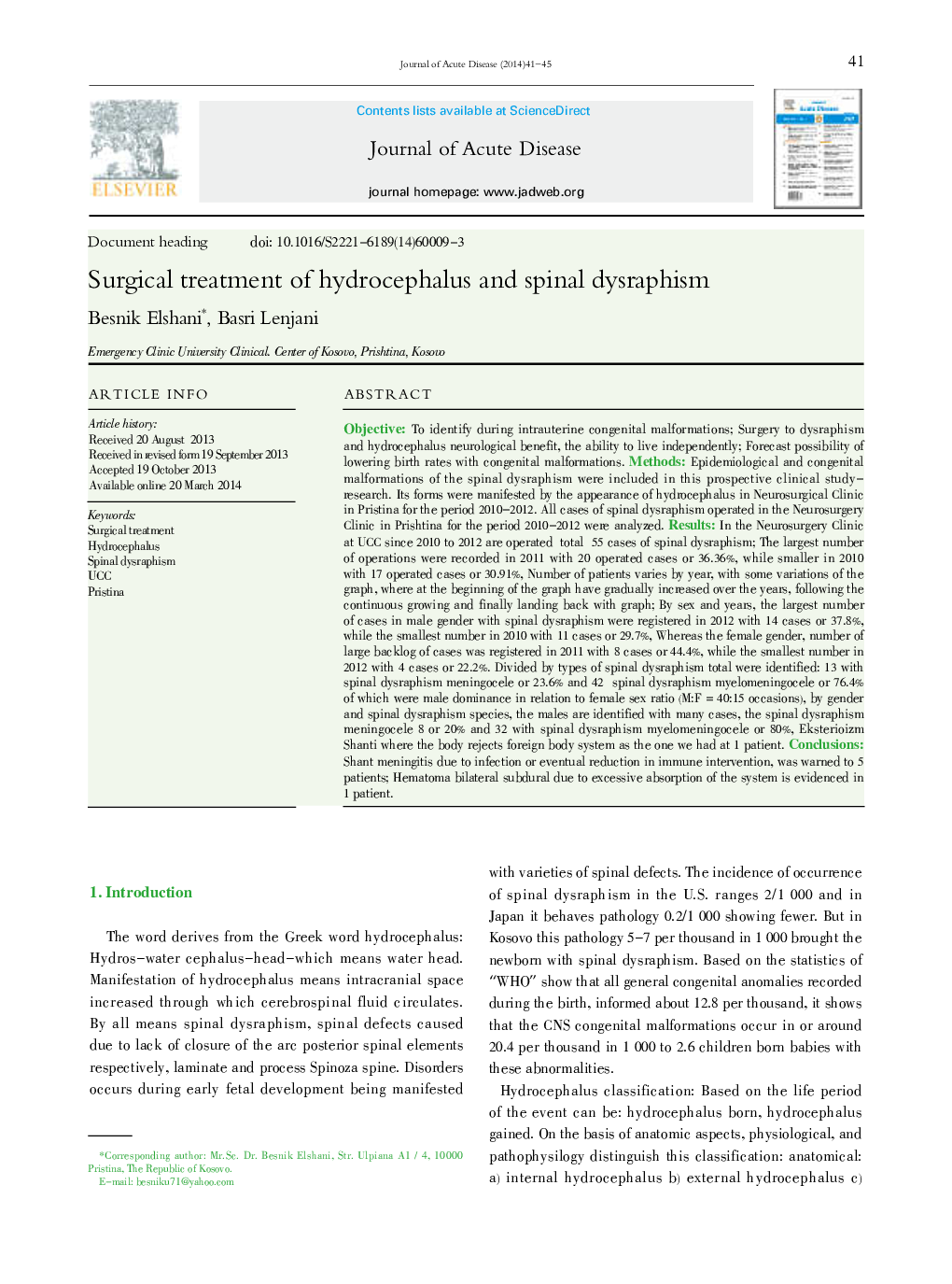| Article ID | Journal | Published Year | Pages | File Type |
|---|---|---|---|---|
| 3475315 | Journal of Acute Disease | 2014 | 5 Pages |
ObjectiveTo identify during intrauterine congenital malformations; Surgery to dysraphism and hydrocephalus neurological benefit, the ability to live independently; Forecast possibility of lowering birth rates with congenital malformations.MethodsEpidemiological and congenital malformations of the spinal dysraphism were included in this prospective clinical study-research. Its forms were manifested by the appearance of hydrocephalus in Neurosurgical Clinic in Pristina for the period 2010–2012. All cases of spinal dysraphism operated in the Neurosurgery Clinic in Prishtina for the period 2010–2012 were analyzed.ResultsIn the Neurosurgery Clinic at UCC since 2010 to 2012 are operated total 55 cases of spinal dysraphism; The largest number of operations were recorded in 2011 with 20 operated cases or 36.36%, while smaller in 2010 with 17 operated cases or 30.91%, Number of patients varies by year, with some variations of the graph, where at the beginning of the graph have gradually increased over the years, following the continuous growing and finally landing back with graph; By sex and years, the largest number of cases in male gender with spinal dysraphism were registered in 2012 with 14 cases or 37.8%, while the smallest number in 2010 with 11 cases or 29.7%, Whereas the female gender, number of large backlog of cases was registered in 2011 with 8 cases or 44.4%, while the smallest number in 2012 with 4 cases or 22.2%. Divided by types of spinal dysraphism total were identified: 13 with spinal dysraphism meningocele or 23.6% and 42 spinal dysraphism myelomeningocele or 76.4% of which were male dominance in relation to female sex ratio (M:F = 40:15 occasions), by gender and spinal dysraphism species, the males are identified with many cases, the spinal dysraphism meningocele 8 or 20% and 32 with spinal dysraphism myelomeningocele or 80%, Eksterioizm Shanti where the body rejects foreign body system as the one we had at 1 patient.ConclusionsShant meningitis due to infection or eventual reduction in immune intervention, was warned to 5 patients; Hematoma bilateral subdural due to excessive absorption of the system is evidenced in 1 patient.
